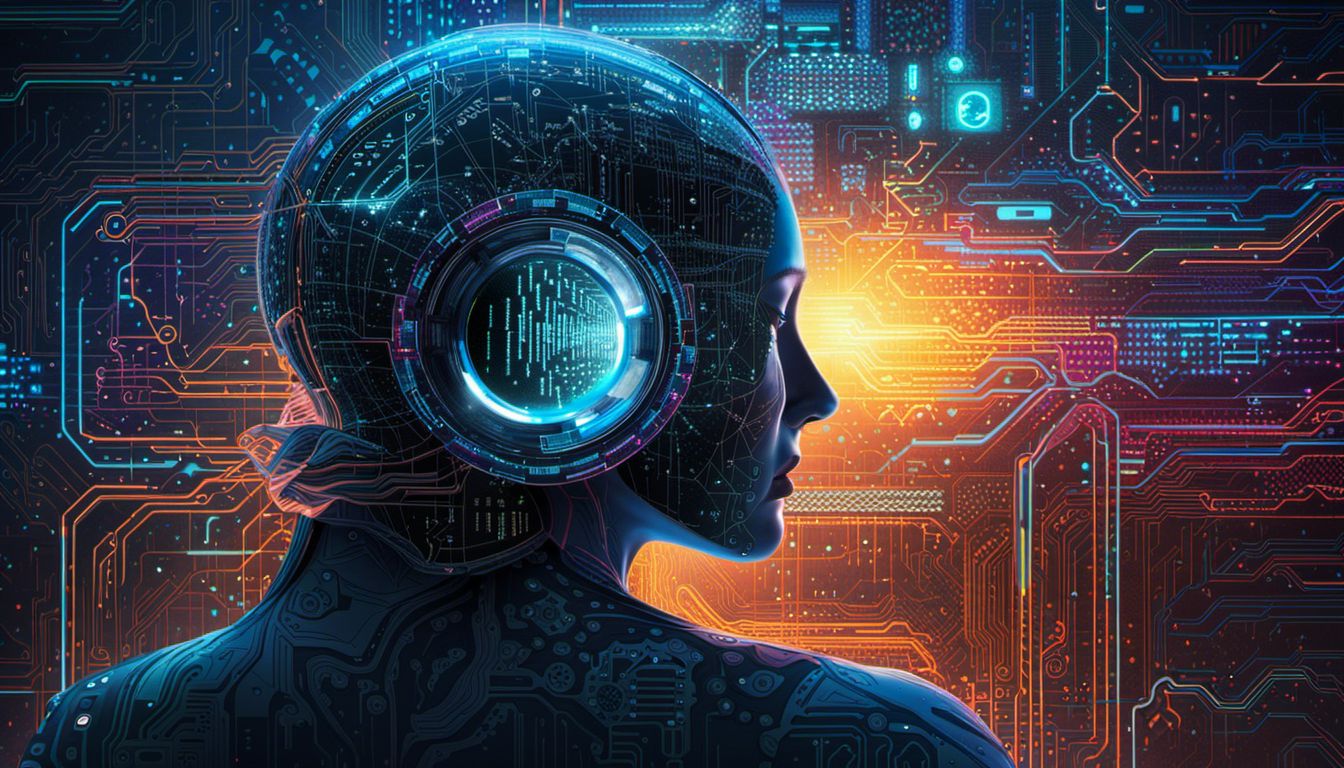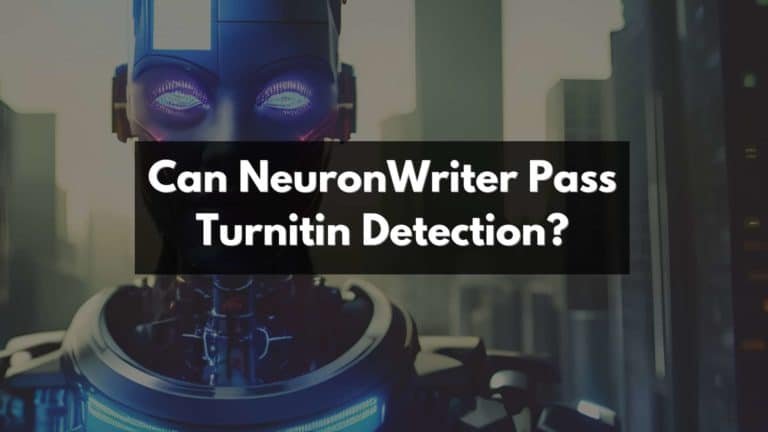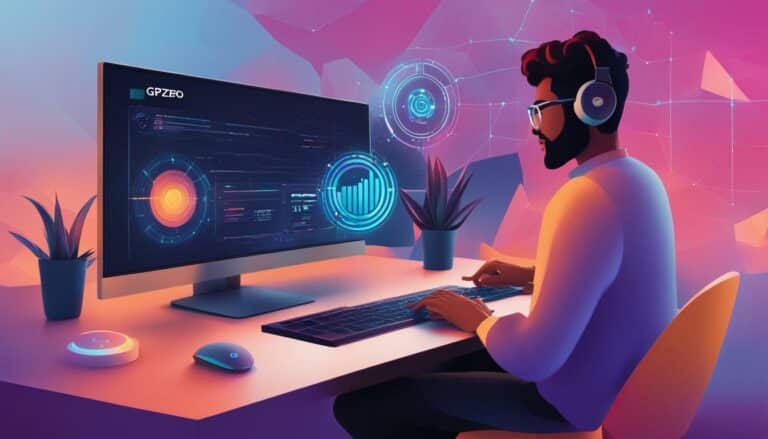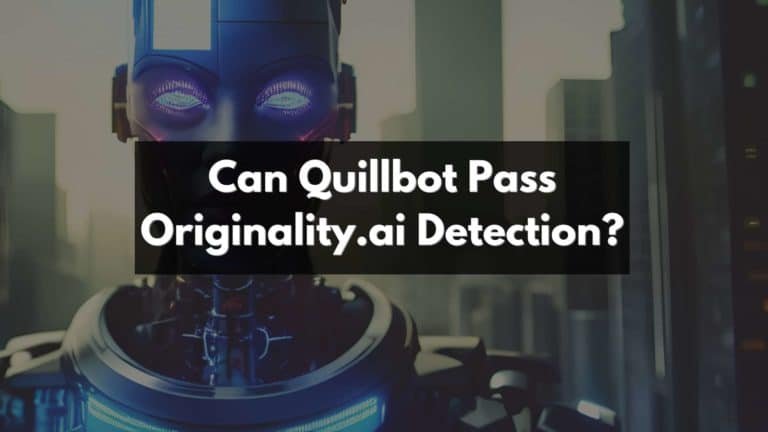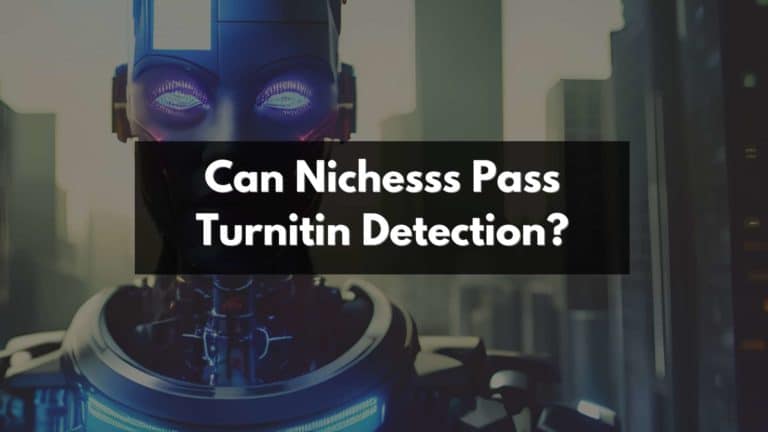Can TextMetrics Pass Turnitin Detection?
Choosing the right AI content writer that can pass rigorous plagiarism checks is a challenge many writers are faced with. TextMetrics, known for its content analysis and evaluation capabilities, has been in the spotlight lately.
This article delves into the question – Can TextMetrics bypass or outsmart Turnitin’s advanced AI detection system? Stick around to learn more, as we unravel this intriguing puzzle together!
Understanding Turnitin’s AI Writing Detection Capabilities
Turnitin’s AI writing detection capabilities involve analyzing various parameters and flags to identify potential instances of AI-generated content.
How does Turnitin’s AI writing detection work?
Turnitin’s AI writing detection operates by using machine learning algorithms. It assesses text and highlights passages that appear to be artificially generated content instead of human-written prose.
The system was trained with millions of examples, including both human-generated text and AI-produced compositions. It then applies this knowledge to new texts it encounters, searching for patterns familiar from its training data.
This detection technology isn’t fooled by superficial changes such as synonyms or rephrasing because it delves deeper into the structure of the language used in a document. Turnitin’s tool scrutinizes intricacies like sentence complexity, word frequency distribution, and subtler linguistic cues often missed by humans to determine whether a piece has been penned by an AI model or a person.
Even attempts at “humanizing” ChatGPT outputs won’t easily bypass this sophisticated system; it can still spot traces of artificiality in the text flow since it goes beyond surface-level analysis for authenticity assessment.
Parameters and flags considered in detecting AI writing
Turnitin’s AI writing detection considers several parameters and flags to identify AI-generated content. These factors play a crucial role in determining whether a piece of writing has been created by an artificial intelligence tool. Some of the key parameters and flags that Turnitin takes into account include linguistic patterns, sentence structure, vocabulary choices, common phrases used by AI language models, and statistical analysis of text segments. By analyzing these elements, Turnitin’s AI model is able to accurately detect AI writing and differentiate it from human-authored content.
Training of Turnitin’s AI model
Turnitin’s AI model is trained using a vast amount of data to enhance its detection capabilities. This training process involves analyzing and evaluating various types of writing to create a comprehensive understanding of different writing styles and patterns.
Through this extensive training, Turnitin’s AI model becomes more adept at identifying potential instances of plagiarism and unoriginal content in submitted papers. The training aims to continuously improve the accuracy and effectiveness of the AI writing detection tool, providing writers with a reliable means to ensure their content meets academic integrity standards.
Interpreting the Results of AI Writing Detection
The AI writing detection indicator percentage provides insight into the presence of AI-generated content, with a higher percentage indicating a higher likelihood of AI involvement.
Meaning of the AI writing detection indicator percentage
The AI writing detection indicator percentage provides insights into the level of AI-generated content detected in a given text. This percentage represents the amount of text that is deemed to be generated by an artificial intelligence model, such as ChatGPT or other similar tools.
A higher percentage indicates a higher likelihood of AI-generated content, while a lower percentage suggests less reliance on AI-writing. It is important to note that this indicator does not determine whether the detected content is plagiarized or violates academic integrity; it simply identifies the presence of AI-generated text within the document being analyzed.
Accuracy and false positive rate
Turnitin’s AI writing detection tool boasts high accuracy in identifying copy generated by AI language models like ChatGPT. It uses advanced algorithms and parameters to analyze the content and determine its authenticity.
However, like any technology, there is a possibility of false positives. This means that occasionally, legitimate content may be flagged as potentially plagiarized or generated by an AI.
While Turnitin continuously improves its detection methods to minimize false positives, it’s important to understand that no system is perfect. So when using TextMetrics or any other AI content writer, keep in mind that while they may have a high success rate in passing Turnitin detection, there is still a small chance of inaccurate results.
Differences between the AI writing detection and similarity score
The AI writing detection and similarity score serve different functions in Turnitin’s plagiarism detection system. Here’s a quick overview:
| AI Writing Detection | Similarity Score | |
|---|---|---|
| Function | Identifies content generated by AI language models like ChatGPT. | Assesses the percentage of text in a document that matches other sources in Turnitin’s databases. |
| Algorithm | Uses complex machine learning algorithms trained on specific AI language models. | Relies on a simple algorithm that matches strings of text to sources in the database. |
| Accuracy | Proven to be accurate in identifying AI generated content, as tested by high school students. | Highly dependent on the breadth and depth of the source database. |
| Use Case | Ideal for detecting AI generated content like TextMetrics. | Commonly used by educational institutions to check for unoriginal content in student papers. |
Remember, the two features are not alternatives but complementary checks to ensure originality and authenticity of content.
Scope of AI Writing Detection
Turnitin’s AI writing detection has a broad scope, covering various AI writing models and even future advancements. Find out how it detects paraphrased content and ensures academic integrity.
Read more to understand the capabilities of Turnitin’s AI detection solution.
AI writing models detected by Turnitin’s technology
Turnitin’s technology is designed to detect various AI writing models. When it comes to analyzing and evaluating content, Turnitin’s AI detection tool can identify copy generated by AI language models like ChatGPT. With its advanced algorithms, Turnitin can effectively detect the use of these AI writing models in written content. It ensures that academic integrity is maintained and plagiarism is detected, regardless of the source or method used in creating the content. Detecting AI-generated content is a crucial aspect of Turnitin’s plagiarism detection capabilities, ensuring that originality and authenticity are upheld in academic writing.
Future-proofing for advanced versions of AI language models
AI language models continue to evolve and advance at a rapid pace, raising concerns about their ability to evade detection by plagiarism checking tools like Turnitin. As writers, it is important to stay informed about the latest developments in AI technology and understand how it may impact the effectiveness of content analysis tools.
By keeping up-to-date with advancements and adapting our writing practices accordingly, we can future-proof our work against potential loopholes or shortcomings in current AI detection systems.
This proactive approach will help us ensure that our content remains authentic, original, and compliant with academic integrity standards.
Detecting AI-generated content that is paraphrased
Turnitin’s AI writing detection technology is designed to identify not only direct copies but also paraphrased content generated by AI. This means that if you’re using an AI content writer like TextMetrics to generate text and then paraphrasing it, Turnitin’s system has the capability to detect that as well.
The algorithms are trained to analyze the language, structure, and patterns used in the content, allowing them to identify whether a piece of writing is likely AI-generated or paraphrased from another source.
So even if you try to “humanize” the AI-generated content by paraphrasing it with your own words, Turnitin can still catch it.
Access and Licensing of Turnitin’s AI Writing Detection Solution
Turnitin’s AI Writing Detection Solution is accessible through licensing. This means that writers who are interested in utilizing Turnitin’s advanced technology to detect AI-generated content can gain access to it by obtaining the necessary license.
By licensing Turnitin’s AI Writing Detection Solution, writers can enhance their ability to identify and prevent plagiarism in their work. This solution is designed to provide accurate and reliable detection of AI writing, ensuring that the content produced is original and upholds academic integrity.
With this access, writers can effectively utilize Turnitin’s powerful AI detection tools and features, enabling them to confidently produce high-quality content while meeting the standards of plagiarism checks.
Conclusion
In conclusion, the question of whether TextMetrics can pass Turnitin detection remains unanswered. While there may be ways to manipulate or deceive Turnitin using TextMetrics, it is important to consider the ethical implications of such actions.
Ultimately, relying on AI content writers like TextMetrics should not be seen as a shortcut to bypass plagiarism checks, but rather as a tool to assist in creating original and high-quality content.
FAQs
1. Can TextMetrics help me avoid detection by Turnitin?
No, TextMetrics cannot help you avoid detection by Turnitin as it is an automated plagiarism detection system that can identify similarities in text.
2. What does Turnitin detect when checking for plagiarism?
Turnitin detects instances of copied or unoriginal content by comparing submitted papers to its extensive database of academic sources, published works, and student submissions.
3. Are there any strategies to evade detection by Turnitin using TextMetrics?
No, there are no strategies to evade detection by Turnitin using TextMetrics as both systems aim to ensure academic integrity and discourage plagiarism.
4. Does a low similarity score from TextMetrics guarantee I won’t be caught by Turnitin?
No, a low similarity score from TextMetrics does not guarantee that you won’t be caught by Turnitin as the two systems have different algorithms and databases for detecting plagiarism.

